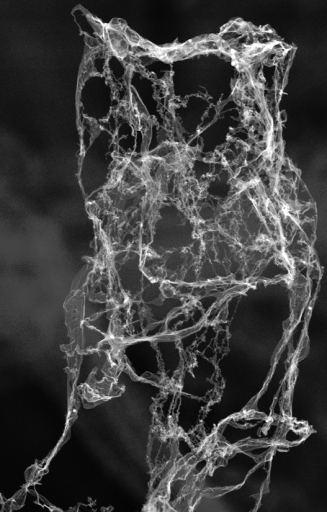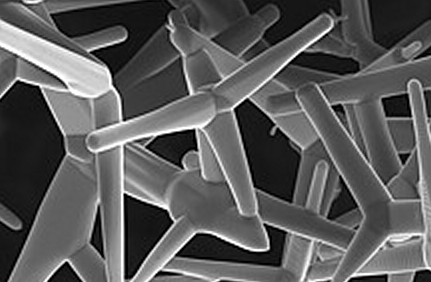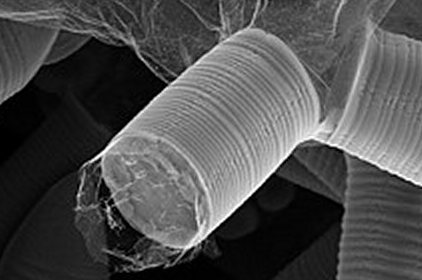Lightest Material in the World
July 26, 2012
“Aerographite” — a network of interwoven porous carbon microtubes — is the lightest material in the world, at 0.2 milligrams per cubic centimeter (75 times lighter than Styrofoam), scientists of Kiel University (KU) and Hamburg University of Technology (TUHH) claim.
Although lightweight, Aerographite is designed to be extremely robust to bear strong deformations. And despite its low density, it can be fabricated in various macroscopic shapes on the order of several cubic centimeters.
Aerographite is jet-black, stable, electrically conductive, ductile. low-density, non-transparent, and four times lighter than the current world-record holder (nickel microlattices).
It is also able to be compressed up to 95 percent and be pulled back to its original form without any damage, says professor Rainer Adelung of Kiel University.
How to make it
1. Heat zinc oxide in powder form to 900 degrees Celsius, transforming it into a crystalline form called tetrapods.
2. Put them in a reactor for chemical vapor deposition and heat to 760 degrees Celsius.
3. In a streaming gas atmosphere that is enriched with carbon, give the zinc oxide a graphite coating of only a few atomic layers. This forms the tanged-web structures of the Aerographite.
4. Introduce hydrogen. It reacts with the oxygen in the zinc oxide and results in the emission of steam and zinc gas. What remains is an interwoven, tube-like carbon structure.
Applications
Possible applications — taking advantage of the Aerographite’s tensile strength, mechanical stability, electrical conductivity, and large surface area — include Li ion battery electrodes (reducing weight), supercapacitors, adding conductivity to plastics without increasing weight, wiring for electronic equipment subjected to high levels of vibration, and air purification, the researchers suggest.
Images credit: M. Mecklenburg et al./Advanced Materials


